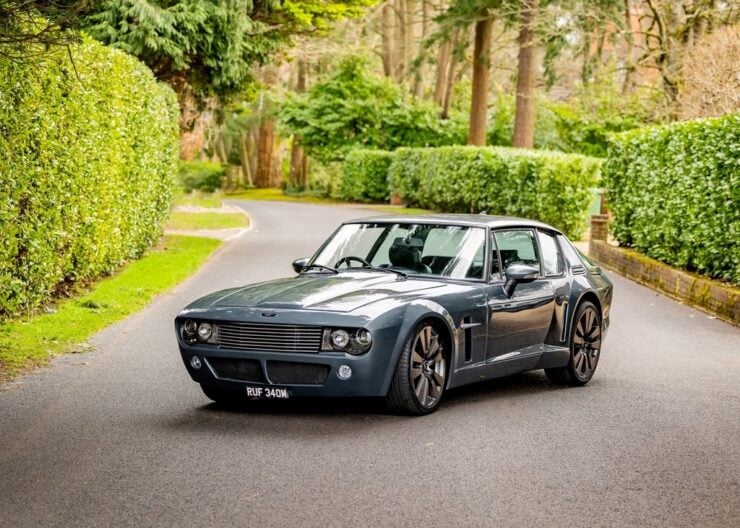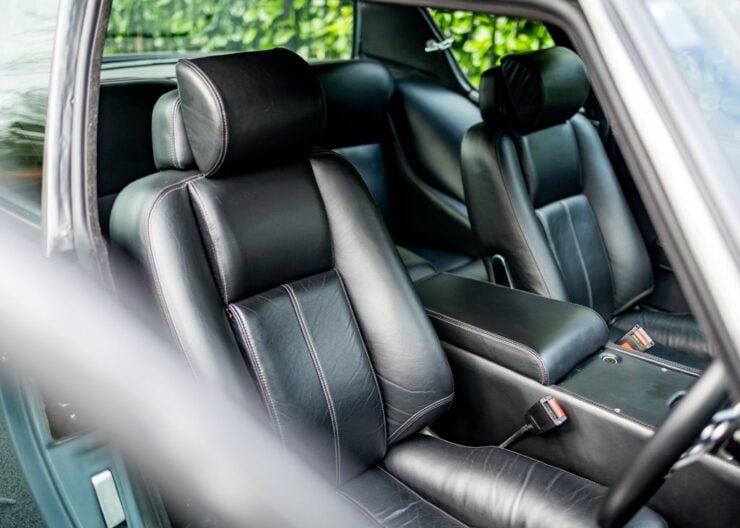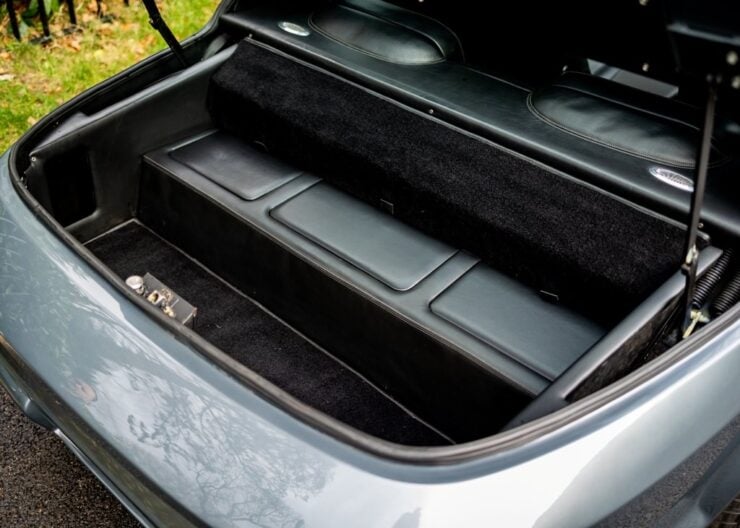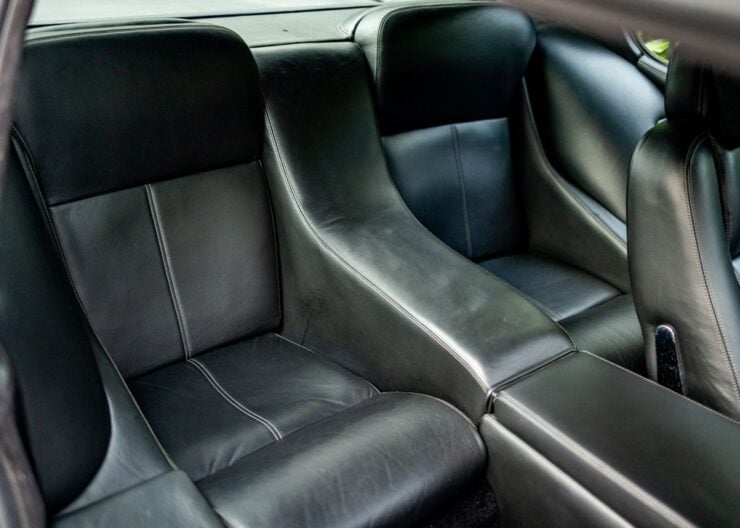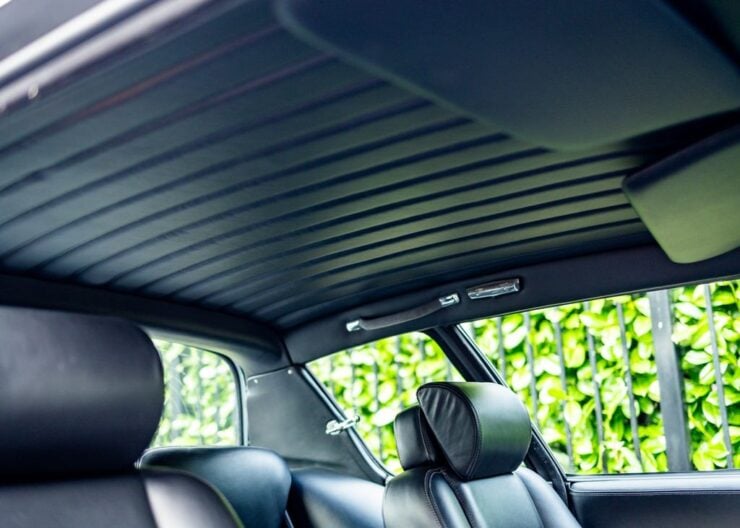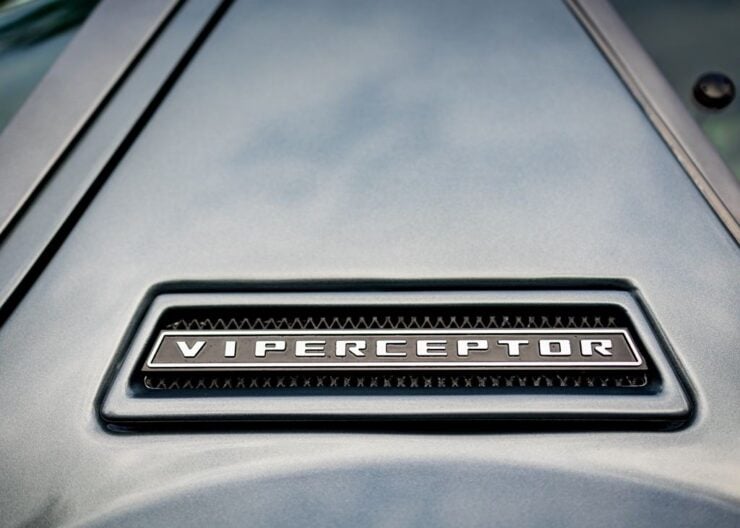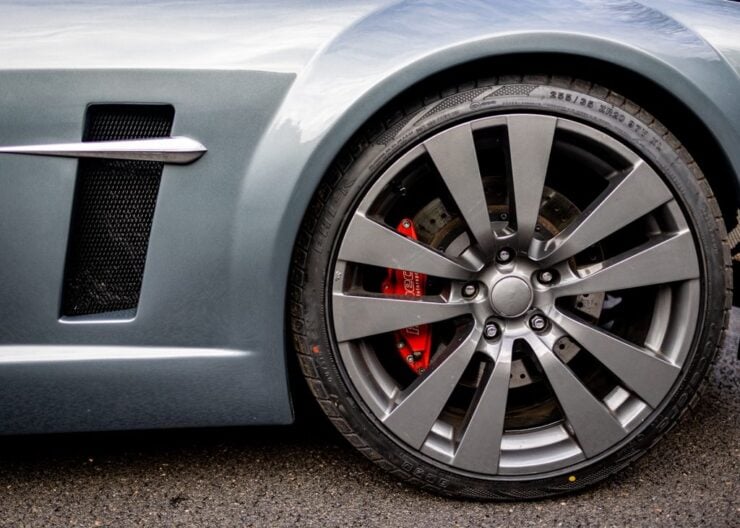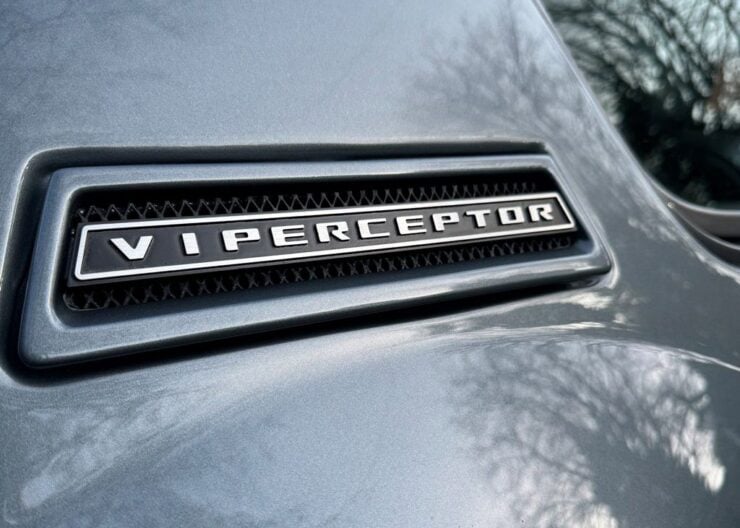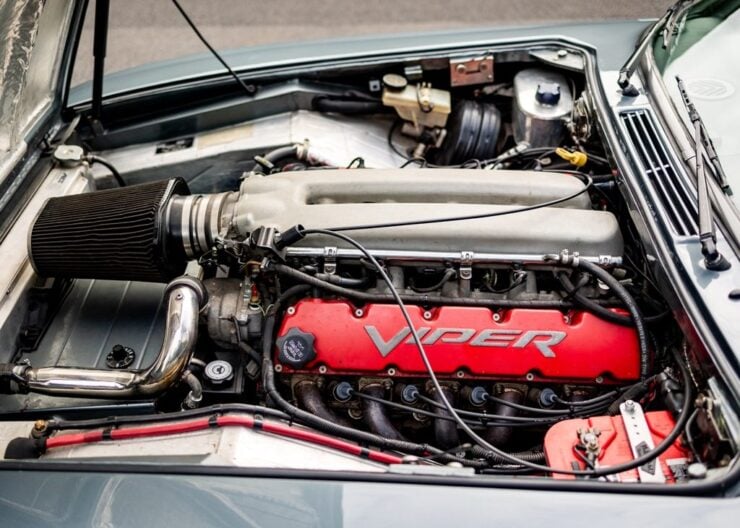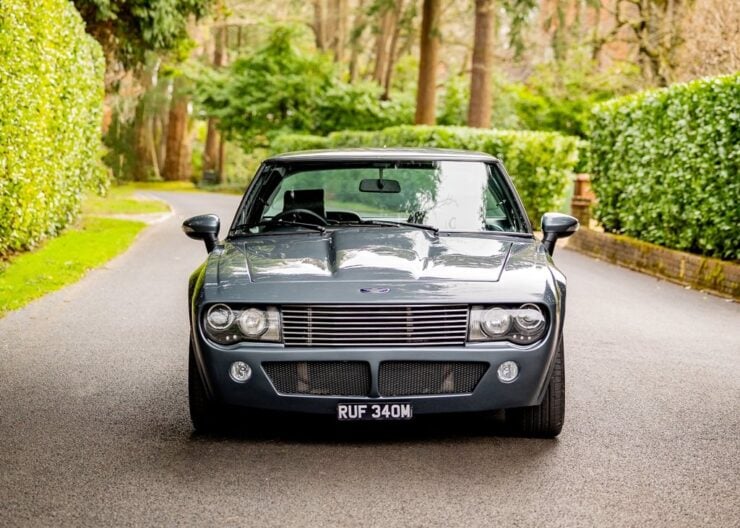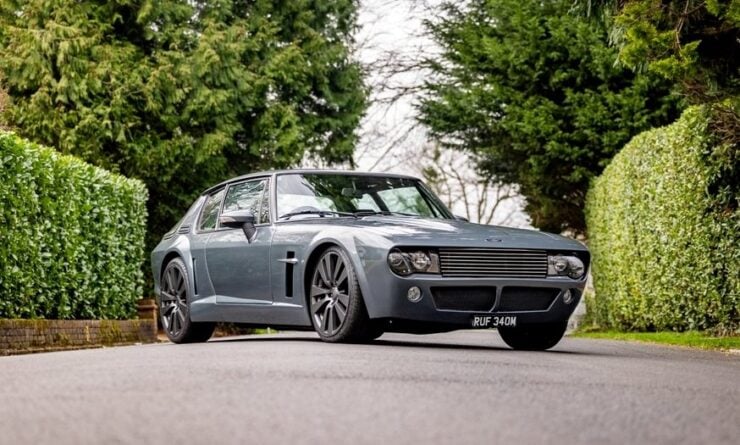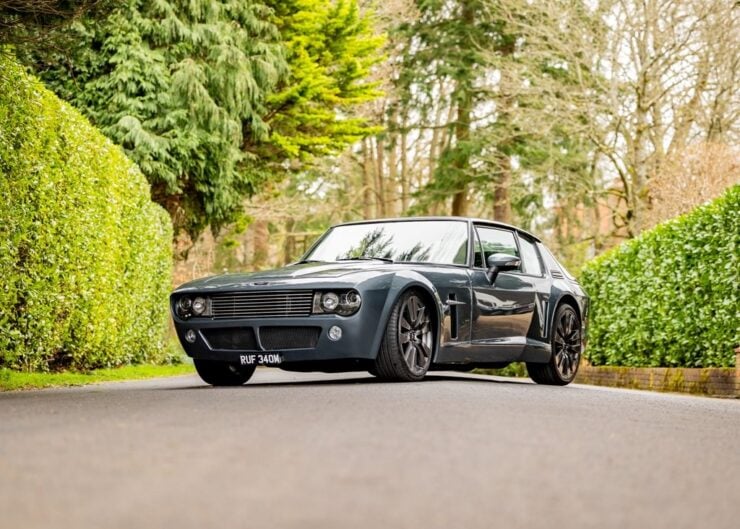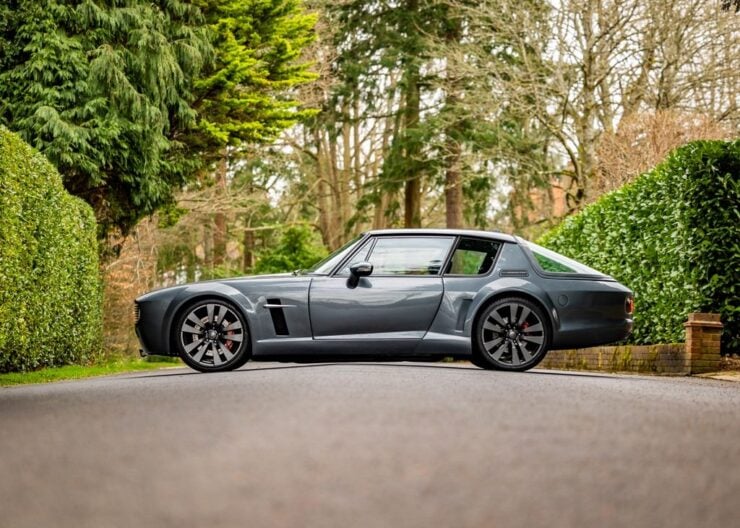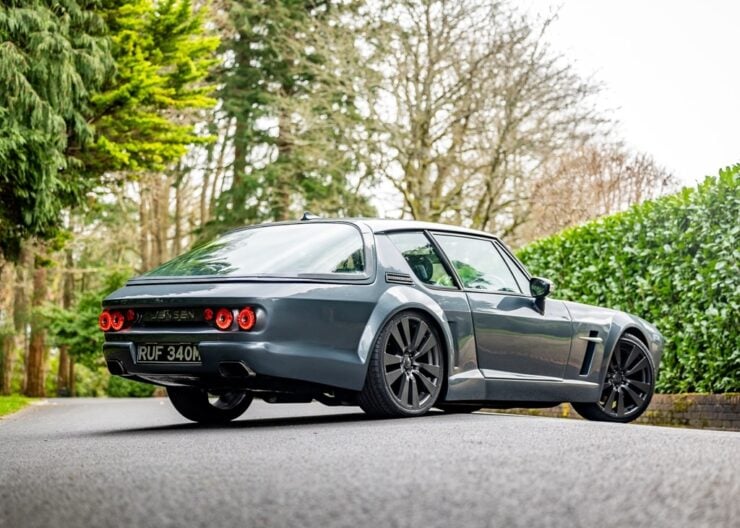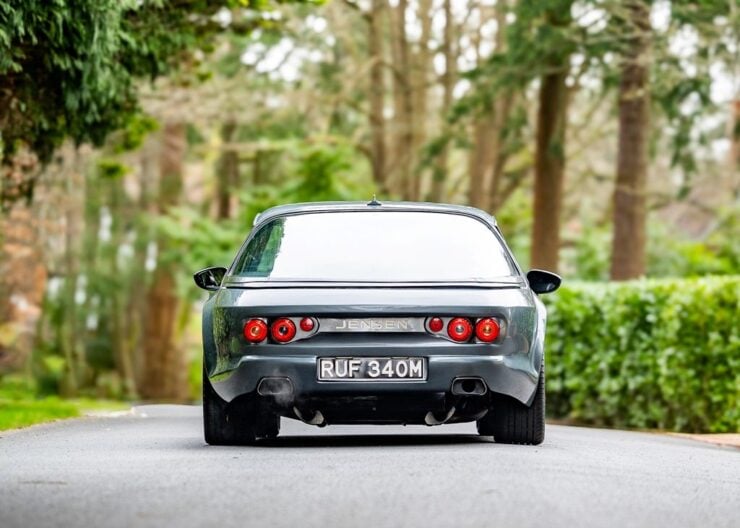This is the Jensen Viperceptor, it’s the only one that was built, costing over £200,000. It’s a combination of a Jensen Interceptor with a Dodge Viper V10 powertrain, with uprated brakes, suspension, and a slew of improvements to the body and interior to match.
The Viperceptor was developed by Brook Anderson working with the Valley Gas Speed Shop in England. They took a 1973 Jensen Interceptor and completely rebuilt it into the car you see here today. It was intended to be the first of a 20 car production run, but sadly this was the only example ever made.
Fast Facts: The Jensen Viperceptor
- The Jensen Viperceptor is a unique one-off vehicle that combines a 1973 Jensen Interceptor shell with a Viper V10 engine. Originally intended as the first of a 20-unit run, only one was built. The build cost exceeded £200,000, and it is now up for auction with an estimate of £78,000 to £92,000.
- Developed by Brook Anderson and Valley Gas Speed Shop in Hampshire, the project took two years from its 2013 inception. It reimagines the Interceptor as a modern GT with vastly updated performance, bodywork, and interior, all tailored around the massive 8.3 liter V10 at the head of its drivetrain.
- The 510 bhp Viper V10 is paired with a Dodge Ram 42RLE 4-speed automatic and a 2.89:1 Salisbury LSD. The car has custom four-wheel independent suspension, Spax adjustable dampers, and large HiSpec brakes at all four corners.
- Extensive body modifications were carried out using CAD, and the interior was retrimmed in high-grade leather and modern electronics, while retaining the Interceptor’s original layout. A white-faced electronic dash, bespoke consoles, and de-locked doors with Chrysler headlights modernize the look without erasing the car’s classic 1970s GT heritage.
History Speedrun: The Jensen Viperceptor
The Jensen Viperceptor is a one-off reengineering of the Jensen Interceptor, a classic British grand tourer originally built from the mid-1960s to the mid-1970s. The Interceptor originally was powered by a range of large American V8s, and it offered performance that was largely unmatched by other British cars of the era.
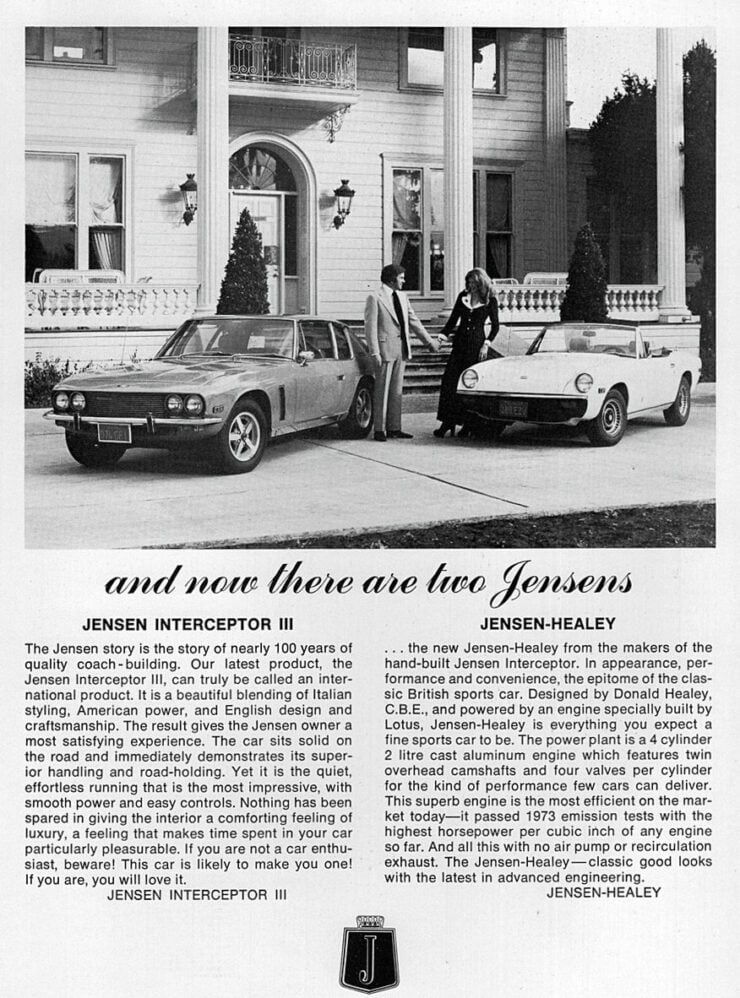

The Viperceptor was developed to explore what the Jensen Interceptor might have become had production continued into the 21st century. It was built by the Valley Gas Speed Shop in Hampshire, England for entrepreneur Brook Anderson. It combines vintage Interceptor aesthetics with modern American V10 muscle and well-thought-out custom engineering to make it all work as it should.
The project to build the Viperceptor began in 2013 with a 1973 Jensen Interceptor shell and took two years to complete. Despite initial plans for a production run of 20 units, just one would be made.
Viperceptor Specifications
The Viperceptor is powered by an 8.3 litre Dodge Viper V10 engine, producing 510 bhp and 535 lb ft of torque. The power is sent back through a 4-speed 42RLE automatic transmission sourced from a Dodge Ram.
With a total weight just under 1,270 kgs (2,799 lbs), the car has an impressive power-to-weight ratio, and the performance off the line is (unsurprisingly) quick.
To better manage the significant increase in power, the chassis and suspension were extensively reworked. The car now rides on an independent wishbone suspension system front and back, with uprated Spax fully-adjustable dampers and modified springs.
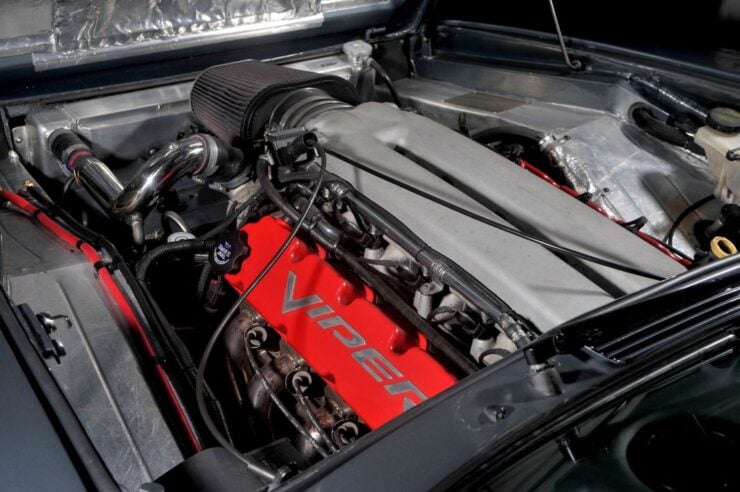


Geometry adjustments include increased caster and negative camber, both to improve high-speed stability and turn-in. The car also has a 2.89:1 Salisbury Powerlock limited-slip differential installed in a bespoke carrier.
Braking is provided by HiSpec 14.5 inch vented and slotted front discs with six-piston calipers, paired with 13.5 inch rear discs and four-piston calipers. The stopping power was carefully considered to match the Viper V10’s output. A bespoke propshaft and custom exhaust system – with 3 inch stainless steel pipes, a balance pipe, and Borla silencers – completes the drivetrain.
The bodywork was stripped to bare metal before being chemically cleaned and treated. All panels were redesigned using CAD, including new front and rear valances, side skirts, side vents, and inner wings. The bulkhead and transmission tunnel were re-worked to accommodate the larger drivetrain, and a new fuel tank was custom-built for the application.
Seam sealing and wax oiling were applied for long-term protection. The exterior was then fitted with modern details like Chrysler 300C angel eye headlights, diode-operated de-locked doors, electrically operated mirrors, and 20 inch wheels. Black chrome surrounds and smoothed lines replaced many of the original Interceptor’s trim pieces, giving the car a more contemporary look.
The interior retained a traditional layout but was fully re-trimmed in high-quality leather, including the original dashboard, which was preserved but updated. New center consoles were fabricated for both the front and rear sections. A new carpet set with leather edging was installed throughout, and a white electronic instrument cluster replaced the original gauges.
The result is a unique homage to the original Interceptor that pays homage to its British GT roots while delivering power and performance that was simply unavailable to the Jensen engineers back in the 1960s and 1970s.
The Viperceptor Is Now For Sale
The car has appeared at shows including the NEC Classic Motor Show and has been covered by a number of major automotive news websites online over the years.
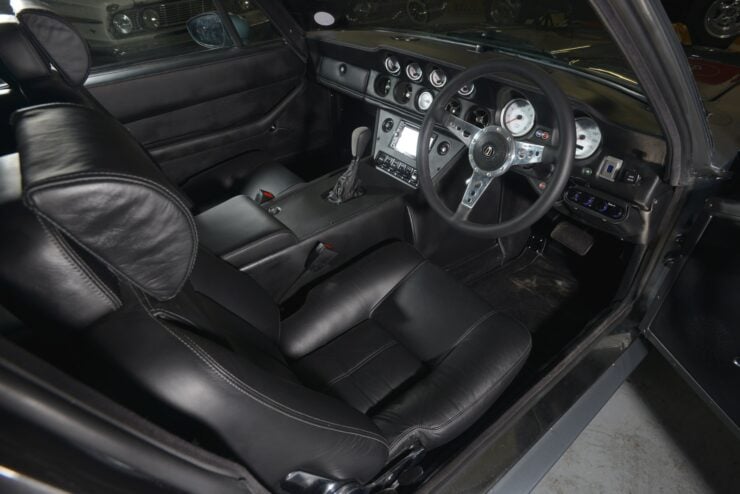


Valley Gas Speed Shop has since confirmed it will not be building another, making this the sole example. With its handbuilt construction, dramatic styling, and high-output V10, the Jensen Viperceptor cost over £200,000 to build, and it’s now being offered for sale with a price guide of just £78,000 – £92,000 ($100,600 – $118,700 USD).
If you’d like to read more about the Jensen Viperceptor or register to bid you can visit the listing here. It’s due to roll across the auction block on the 19th of July.
Images courtesy of Historics Auctioneers


